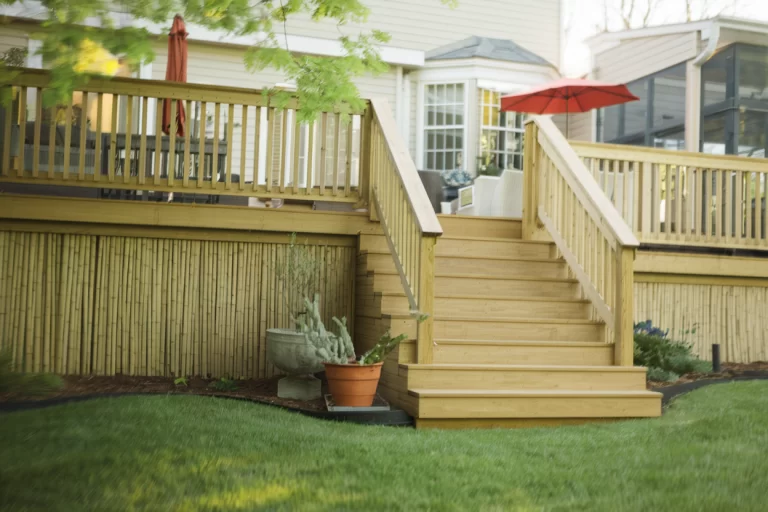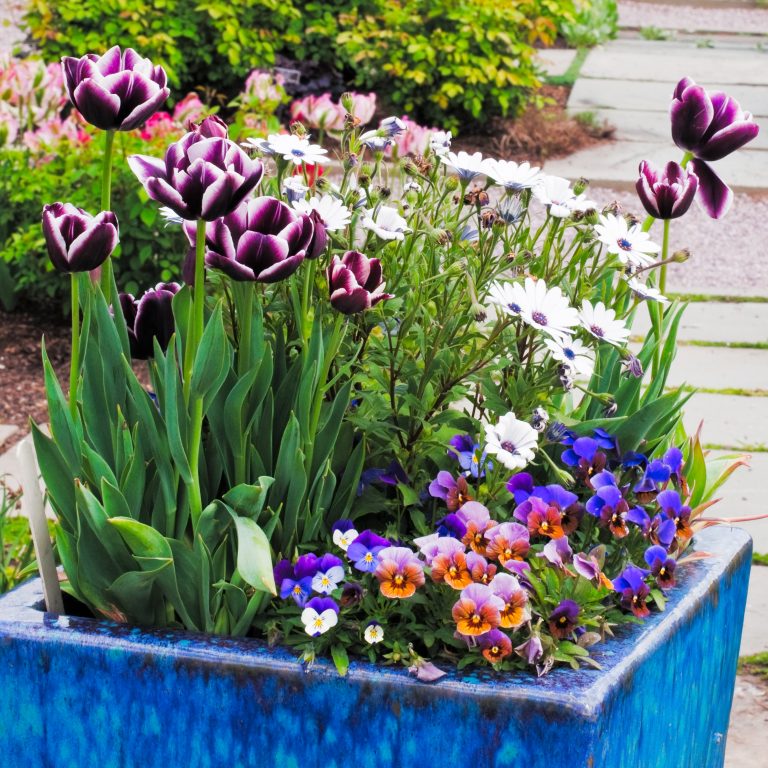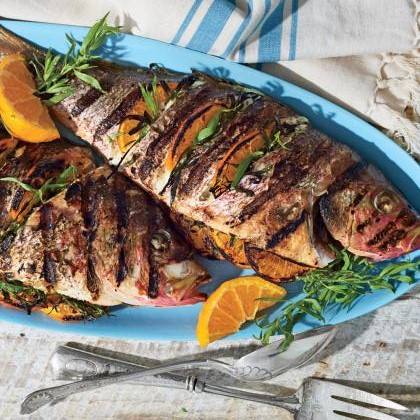Outdoor Kegerator Guide
Guide to Outdoor Kegerators
Do you want your outdoor kitchen to be the gathering place for all your friends and family on game day? If so, then a kegerator should be part of your outdoor kitchen building plans.
Hands down, the lure of cold beer on draft will make yours the envy of the neighborhood. And not only for game day, but pool parties, birthdays, or Saturday afternoons relaxing on the deck. And while your beef brisket may be the best in town, there’s nothing quite like a fresh, cold beer straight from the tap right in your own backyard.
If you enjoy sitting with a beer in your hand, consider installing an outdoor kegerator on your deck or patio. Outdoor models include tough exteriors and sealed backs to preserve the inner electrical components, so they can survive pool splashes and rainy season use.
Bringing the pub to your backyard is a great way to establish an entertaining style all your own. However, beer must be served cold, which means overflowing refrigerators, trips to the shop for ice, and lugging massive ice chests to keep everyone happy. Or, even worse, enlisting the help of your visitors to perform the dirty work. Why put the load on someone else when a single appliance can do it?
What is a Kegerator?
A kegerator is a beer keg refrigerator. It holds a beer keg and has a tap to dispense beer on the top. Also known as beer dispensers, kegerators keep your beverages cold and fresh by compressing carbon dioxide.
An outdoor kegerator is engineered with extra insulation, sealed electrical and mechanical components, outdoor rated stainless steel outdoor housing and strong compressors so that it can keep beer chilled to the correct temperature.
Who Should Buy a Kegerator
Reasons to Buy a Kegerator for an Outdoor Kitchen or Bar
Kegerator Pluses
- You can save money
Depending on how much beer you consume on a regular basis and the sorts of beer you buy, buying a keg of beer could save you a lot of money. The upfront cost of a beer keg, like most bulk purchases, may appear high at first, but as you break down the cost per pint, you’ll rapidly see the savings build up.
Consider how much you would pay for a draft beer at a pub. Depending on the brand of beer you’re drinking, you may expect to pay anywhere from $7 to $12 for a beer, without including the bartender’s tip. Plus, no one goes to a pub to drink just one beer; you’ll almost certainly consume two or more. A kegerator pays for itself over time because each pour can be as low as $2 for every 12 ounces of beer.
After a few kegs, you’ll have enough money saved to cover the cost of the kegerator.
- Drinking cold draft beer is less harmful to the environment.
When beer is stored in cans or bottles, drinking it generates extra waste, which ends up in landfills or the ocean. Not to mention the resources required to manufacture all of those beverage cans and bottles. A keg, like the beer glasses you pour your beer into, can be reused. When you have your own kegerator, you will produce less waste.
- You’ll save space in the fridge.
If you keep your refrigerator filled with enough beer for you and any visitors, you’ve definitely run across the problem of fridge space constraints. All of the food and other beverages you need to keep refrigerated must fit in your refrigerator. There’s just so much room in an outdoor kitchen. You’ll instantly solve your space problems if you shift all of your beer-chilling demands elsewhere. A dedicated beer fridge is usually a smart idea, but if you’re going to invest in a new appliance for your beer an outdoor kegerator for draft beer might be the answer.
- Proper Temperature Management
A keg of beer can last for months if kept at the proper temperature. If you’re worried that you won’t be able to finish a keg fast enough to justify your own beer dispenser, think again. A keg of beer will typically last three to four months if stored properly.
- You’ll Never Be Without Good Beer
Isn’t this the real reason you’re thinking of getting a keg in the first place? Whether you want to buy kegs of your favorite large brand, get kegs of craft beer from a local brewery, or manufacture your own beer, a kegerator allows you to keep your favorite draft beer at the exact temperature you want it.
Kegerator Shortcomings
We asked a panel of kegerator owners what they wished they knew about outdoor kegerators before they bought one. Here are some of their comments which may help guide your decision.
- Shelf life vs. that of packaged beer – One member commented that the practical shelf life of a keg is about 1/3 that of beer sold in bottles or cans. If you don’t drink the same beer all the time, or don’t entertain often, this may affect the practicality of a keg cooler.
Another respondent discovered that variety was more important than originally thought, or ‘why did I think I needed to have this much of one kind of beer on hand’. Since everyone has their own favorite micro brew or other beverage, it makes more sense to that respondent to have an outdoor refrigerator and portable coolers for parties.
A panel member advised sticking to 1/6 kegs unless you only drink one brand and you are an “efficient” drinker. Another recommended a dual tap system so you have some variety.
- The importance of cleaning the kegerator – On average it takes about 15 minutes to clean a keg and the lines if the system is set up right. The lines must be kept clean and 100% cold for proper flow. (see #4 below).
- Expense concerns – Along with the concerns in #1 above, a panelist recommended spending $1000 on a quality outdoor refrigerator and then the extra $700 or so on beer inventory. Citing beer waste, the extra expenses involved in maintaining a kegerator, the effort to clean lines and the fact that you are stuck drinking the same beer until the keg is empty are things that were found out too late.
- Reducing foam – One panel participant commented that the line between the kegerator and the spout should be cooled in order to eliminate some foam. Some models have an insulated sleeve, others do not.
- Pest nuisance – The handles and spout attract bees which no one had mentioned previously. Any accumulation in the drip trays will also attract insects.
What Makes a Kegerator Rated for Outdoor Use
Outdoor kegerators can store up to a full-sized keg within a protected, robust refrigerator, with the electric wiring and other components insulated for the harsher elements of outdoor living spaces like a covered patio or a pool house. They have a front-ventilation design that allows tucking them away against a wall or outdoor builtin an outside kitchen much easier.
Outdoor kegerators are designed to keep beer cool and frosty regardless of the weather. Like other outdoor appliances, a kegerator works best when the outdoor temperature is above 45 degrees F. and under 100 F.
Above 100 degrees, a kegerator may struggle to chill your beer properly. Below 45 degrees F. outdoors, the kegerator may not turn on and will eventually freeze over.
Indoor kegerators are commonly designed to be set up in one location and never moved, whereas outdoor kegerators are frequently designed with some mobility.
Kegerator Types
Mini
Mini kegerators are portable and usually can be used indoors or outdoors and moved accordingly. These little tabletop alternatives can accommodate a single mini keg, however others can carry two. They’re a terrific choice for intimate gatherings or parties.
Most are under two feet tall and weigh anywhere from ten pounds to forty pounds. Self-pressurized dispensers are ideal for those who have limited storage space.
Mini kegerators are typically priced between $150 to $350, making them an excellent entry point for someone interested in having their own dispenser but not quite ready to invest in a full-size kegerator. The majority of these smaller dispensers are designed to operate with pressurized kegs, but some do function with non-pressurized kegs as well.
The disadvantage of this type of countertop appliance is that obtaining a varied selection of beers available in a 5L keg is tough. This increasingly popular option can now be found in some supermarkets in the beer aisle. Mini kegs hold 5 liters of beer, or 1.33 gallons.
Freestanding
These are the most cost-effective and widely used kegerators. Beer can be served from a freestanding kegerator in your basement, rec room, den, garage, or just about anywhere else indoors. The majority of units have casters on the bottom so they can be readily moved.
One thing to keep in mind when using standalone units is to give enough space for optimum ventilation. The compressor’s warm air is vented out the back of the machine. You should leave a 2 to 3 inch space behind the kegerator to allow air to escape. A kegerator that isn’t properly ventilated won’t live very long. Countertop use is not recommended for these types of units.
Built in/Under counter
A built-in kegerator is the way to go if you’re adding a kegerator to your kitchen or home bar. Undercounter kegerators feature ventilation going out the front, so they won’t overheat if the back is covered or against a wall. For a professional and flawless look, the draft tower can be incorporated into your countertop.
This type of dispenser will also be more expensive than a typical freestanding unit. Its increased price is owing to its one-of-a-kind design. The vents are hidden in the front of a built-in device, allowing it to function properly and avoid overheating.
Tap Configuration
Think about how many beers you may want to keep on tap. Home kegerators are available with a multitude of tap configurations. While they are available with three taps, the dual-tap option is the most popular choice among consumers.
If you have a tried-and-true beer that you love, and you likely won’t be buying anything other than that particular beer, then a single tap kegerator is probably going to suit you just fine. However, we have found that many people prefer to have multiple beers on tap and ready to serve at all times.
No matter what tap configuration you initially buy, be it single or double, it is very easy to upgrade or add taps at a later date. It will require you to buy a few extra parts, but it is very easy to accomplish.
Some popular tap configurations include: (inches measurement is the width of the kegerator unit)
15″ wide single tap
24″ wide single tap
20″ wide dual tap
24″ wide dual tap
49″ wide dual tap
24″ wide triple tap
61″ wide triple tap
68″ wide triple tap
72″ wide triple tap
When planning your outdoor kitchen or bar, you will need to know the cutout dimensions of these sizes and types of kegerators in order for them to marry seamlessly into your countertop or island. You also should know whether you need a right hinge kegerator or a left hinge kegerator for the most efficient positioning in your outdoor bar or kitchen.
Factors to Consider When Buying an Outdoor Kegerator
Size
The size of outdoor kegerator will largely be determined by what types and sizes of kegs are available.
To find out what size kegs of your favorite beers are available in your area, do some research. Some artisan breweries only sell beers in 1/6-barrel sizes (sixtels). Most single tap and multiple tap kegerators can accommodate two sixtels. You can have a backup keg on hand for parties this way.
While kegerators come in a variety of sizes, most people choose their preferred model depending on the size of keg it can hold (aka the number of drinks). Each product’s “Specifications” section contains this information. We’ve included the various keg sizes available, as well as how many 12-ounce glasses each keg can carry, below.
165 glasses from a half barrel
The most common keg size, often known as a “Barrel of Beer” or a “Full Keg,” is the favorite choice for beer enthusiasts, since it offers the most brand and taste possibilities of any other size. These kegs weigh about 160 pounds and hold roughly 15.5 gallons of beer when fully loaded. They are around two feet tall with a diameter of 16 inches.
82 glasses from a quarter barrel
Because it’s the same width as a half barrel keg but half the height, this half size keg is also known as a “Pony Keg” or a “Stubby Quarter.” This keg weighs 90 pounds and carries 7.75 gallons of beer.
Quarter 82 Glasses, Slim
This keg, sometimes known as a “Tall Quarter,” holds the same amount of beer as a quarter barrel keg but is significantly smaller. It’s half the diameter of a half barrel but half the height. It weighs 90 pounds, just like the quarter barrel keg.
Kegerator – Single Tap
A mini keg, sixth barrel keg (up to 3), quarter barrel keg (up to 2), slim quarter keg (up to 2), and a half-barrel or full-sized keg can all be stored in a normal single faucet kegerator.
Kegerator – Dual Tap
A mini keg, sixth barrel keg (up to 3), quarter barrel keg (up to 2), slim quarter keg (up to 2), and a half-barrel or full-sized keg can all be stored in a normal dual faucet kegerator.
Kegerator – Triple Tap
A conventional triple faucet kegerator can normally handle a mini keg, sixth barrel keg (up to three), quarter barrel keg (up to two), slim quarter keg (up to two), half-barrel or full-sized keg, and a half-barrel or full-sized keg.
Another option is for a home brew kegerator. Mini kegs, sixth barrel kegs (up to three), quarter barrel kegs (up to two), slim quarter kegs (up to two), Cornelius (soda keg) kegs, and a half-barrel or full-sized keg can all be stored in a regular homebrew kegerator.
Cost
Kegerators, like many other outdoor appliances, are priced according to their features, quality, size, and usefulness. Prices are influenced by a variety of other things. A standalone unit, for example, is likely to be less expensive than a built-in unit. They require a separate cooling system, have various energy usage requirements, and even demand different cabinet materials.
An indoor kegerator constructed for an air-conditioned environment is not sealed and insulated the same way as an outdoor kegerator. So expect to pay more for an outdoor rated kegerator than you would a comparably sized indoor one.
The cost of a single tap all stainless steel outdoor kegerator will be more than a single tap indoor model. Outdoor kegerators need 304 grade stainless steel to withstand the elements and minimize rusting.
In general you can find a quality outdoor kegerator from $1800 to $2400. Experienced DIYers can build one themselves for much less with a kegerator conversion kit. Make sure the kit you buy and the refrigerator you convert is outdoor rated.
Digital displays, multiple taps, precise temperature control, and air-cooled towers are just a few of the features and benefits that come with these higher-end machines.
How a Kegerator Functions
Your kegerator must be able to maintain pressure and maintain a steady temperature in order to function properly. Your kegerator should maintain a temperature of 38°F, plus or minus, to keep your beer fresh for as long as feasible. Please remember that depending on the type of beer, the storage or serving temperature may differ.
You should go for a kegerator with a digital display if possible. This will allow you to quickly observe where the temperature is currently at and change it to fit your preferred serving temperature for that particular style.
Your regulator will assist you in setting the proper pressure for kegs containing non-pressurized beer, ensuring that your beer is properly carbonated without becoming excessively foamy. You may need to fiddle with the regulator settings to get it just right, depending on the model you choose and the type of beer you’re pouring.
The vast majority of kegerators will come with all of the necessary parts, but there may be a few models that are missing something crucial. Aside from the kegerator, here’s a complete list of what you’ll need:
Placement & Ventilation Requirements
Many individuals will choose a standalone kegerator for their home because they are easier to move around or take with them if they relocate. However, there must be a couple of inches between the rear of the dispenser and the wall for this sort of dispenser to work. This little amount of space is required for the unit to function properly. Your kegerator will struggle to maintain a steady interior temperature if it lacks sufficient ventilation. This will make it work harder than it needs to and, as a result, reduce its longevity.
You’ll need a built-in kegerator with ventilation at the front of the unit if you want to push it up against the wall or position it beside or inside your outdoor kitchen cabinets. It will be more expensive, but if you’re low on room or simply want a seamless built-in look, the added convenience may be worth it.
Parts of a Kegerator
If you are assembling your kegerator yourself, you should familiarize yourself with these parts:
- Faucet Handle
- Faucet
- Beer Tower
- Guard Rail
- Drip Tray
- Regulator
- CO2 Tube
- CO2 Cylinder
- CO2 Holder
- Keg Coupler
- Metal Keg Floor Support
- Caster Washer (for free standing units)
- Casters (for freestanding units)
- Neoprene Washer
- Snap-On Clamps
- Wire Shelves
- Half Barrel Keg
- Faucet Wrench
Most kegerators will be equipped with all the listed parts. Others may not. Make sure your chosen model comes complete or is a kegerator with kit so you can finish assembly.
Cleaning
Cleaning your kegerator and draft beer tower regularly will ensure you get the best tasting beer and that the beer will flow efficiently.
From the walls to the coupler, every aspect of your kegerator needs to be cleaned on a regular basis. This will not only keep your beer tasting fresh, but it will also aid in the maintenance of the equipment and ensure that the beer flows at an appropriate rate.
The first step is to obtain a kegerator cleaning kit. These kits include a nylon faucet brush, a check ball lifter, a special beer line cleaning agent, and a kegerator faucet wrench and gasket, as well as everything you need to clean your kegerator properly.
Temperature Control & Displays
Many kegerators come with digital screens that make checking the temperature inside the appliance simple. You’ll usually discover a simple way to modify the temperature alongside these displays to better suit your preferences. Keep an eye on the temperature so that if a problem arises, you can swiftly troubleshoot and remedy it.
Durability
An outdoor kegerator is manufactured with outdoor rated materials and is insulated to perform in a wide range of temperatures. However, like most outdoor refrigeration appliances, it will struggle to perform above 100 degrees F. It might also freeze up if the outdoor temperature drops below 38-40 degrees Fahrenheit.
Are Kegerators Noisy?
The stronger and more robust the kegerator compressor, the noisier the unit will be. Built in units are usually quieter because the cabinetry attenuates sound somewhat. If noise is a concern, then check with the kegerator specifications to see what decibels the kegerator typically runs at and choose a model with a lower decibel rating.
Features & Accessories
Features of a Kegerator
Temperature Control: Look for digital thermostats that allow you to set the temperature to your liking. You can change it up depending on what kind of beer you have on hand.
Auto Defrost: Defrosted water is routed into the drip tray on top of the compressor, where it evaporates due to heat transfer.
Tap Kits: Look for a kegerator that comes with tap kits. Everything you need to get started is usually included, including a CO2 tank, regulator, tap draft arm, connection gear, and an American Sankey tap.
Temperature Alarm: Notifies you when the unit exceeds the temperature range you’ve set.
Shelving: Shelves are included with some kegerators. They’re great for folks who want to keep a smaller keg as well as a variety of beer bottles or cans.
Questions
What’s the best way to clean a kegerator?
Cleaning your lines after each keg is recommended by experts. If you don’t, the yeast and malt residue that builds up over time will give your lines a slightly stale taste. Clean the inside and outside of the kegerator first, then use cleaner to flush the beer lines. Disassemble the unit and clean the faucets and couplers for a thorough cleaning.
In a kegerator, how long does a keg last?
When you crack open a beer, you have only a few hours to drink it down to the last drop. A pasteurized beer, on the other hand, has an eight-week shelf life in a kegerator. However, keep in mind that the time will vary from brewery to brewery. Smaller craft breweries will have a shelf life of six weeks, while larger breweries would have a four-month shelf life.
Where can I get a kegerator’s CO2 tank filled?
While filling a CO2 tank may sound daunting, there are a number of places where you can get refills. The majority of sports goods stores, welding shops, scuba or snorkel shops, and ordinary home hardware stores will refill your CO2.







